Tag: Work Out
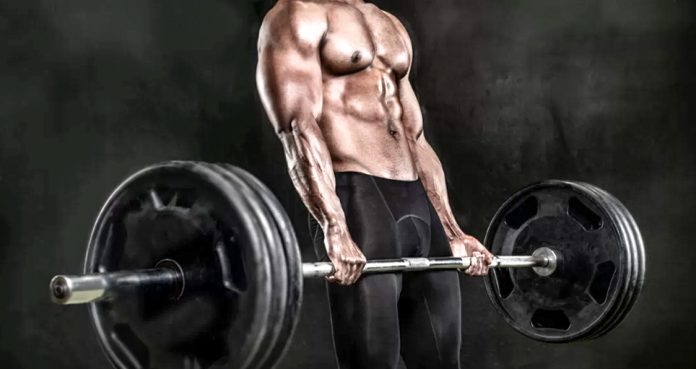
4 Exercises To Build Killer Hamstrings
Turn those hams into boars.
When it comes to building up the legs many people focus on the quads more than any other muscle group. Though the leg is comprised of a number of muscle groups including the calves, quads, and hamstrings, it seems that most of the attention is given to the muscle group that you’d see most readily in the mirror. It’s not so farfetched as many beginners often focus on the parts they can see rather than the entire body as a whole. But if you want to have a symmetrical and aesthetic physique you’ll have to focus on every muscle group in the leg.
The hamstring is the antagonistic muscle to the quad, but doesn’t seem to get as much attention. Much like with the back, the hamstrings are located on the back side of the body and therefore aren’t attacked nearly as much. But the hamstrings, along with the quad, are responsible for stabilizing the knee and can ultimately do wonders for knee pain.
So what are some exercises you should have in your leg day routine that can not only give you some great hamstrings, but strengthen your glutes as well? We’ve compiled a list of some great exercises that you should definitely add to your workout.
Sumo Deadlift
The positioning of your grip on the barbell can make a huge difference with this deadlift variation. Where the attention is more focused on your lower back in your usual deadlift, the grip as well as the wider stance with the sumo deadlift will transfer more tension in your hip area and will mean that you must focus on lifting more with your legs, in this case with the glutes and hamstrings.
Lying Leg Curls
One of the staples of hamstring development, this exercise may not be as taxing on the body as the other exercises on this list, but if utilized correctly with muscle contraction in mind then this one can be beneficial for a lighter day at the gym. By using adequate weight you’ll be sure to feel the burn in the glutes and hamstrings.
Glute Ham Raise
This exercise requires that your feet or secured by either having someone hold your feet down or by hooking your heels under a weighted barbell or fixed apparatus. By doing the movement slowly and focusing on contraction of the glutes and hams, you’re sure to get a great pump from this exercise.
Romanian Deadlift
This deadlift is great for building up the hamstring and the glutes as well. They are ultimately a great choice for improving the posterior chain and are a great strength exercise to have in your routine. Seeing as how it’s a movement that focuses on strength more than anything else, keep the reps in the 5-8 rep range while being sure to go heavy.
Have some favorite hamstring or glute exercises? Let us know in the comments below and be sure to follow Generation Iron on Facebook and Twitter.
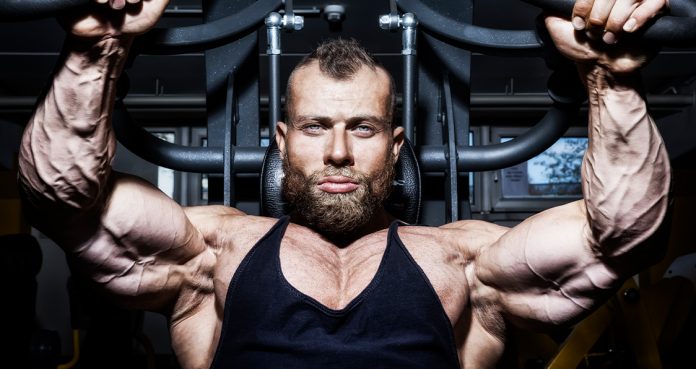
Train Your Inner Chest With This Unique Workout
A unique technique for building your inner chest.
When it comes to training the chest many beginners tackle the issue the wrong way. Some just hit the bench press over and over thinking that it’ll give them the size and definition they seek. Now, that’s not to say that the bench press is the wrong way to go, but it’s definitely not the only exercise you should be doing to build a well defined chest. Though the bench is definitely going to help, it won’t exactly do wonders for all the muscles in your pecs, particularly the inner chest.
We should take a moment to understand the importance of innovation. If we truly wish to develop ourselves into the absolute perfect form we must consider that doing things the same way over and over again can do a number of things. It can teach us to train our bodies in the correct way, giving us a firm foundation that will allow us to continue seeing results. It can also lend itself to restrictive thinking.
Mindset is an important aspect of proper training. If you’ve trained for long enough then you undoubtedly know of the concept of the mind-muscle connection. In order to activate specific muscle groups and get all the muscle fibers firing on all cylinders it’s imperative that we focus all of our mental capacity and attention on what’s being worked. Simply heading to the gym and thinking about the bench press as our sole method for chest training will automatically lead us down a dogmatic mindset, one that closes us off to the countless possibilities.
So if we’re talking about training the chest it can’t just be viewed as the massive slab of muscle that can only be activated in one particular way. Instead we must aim to look at the chest with a broader scope in mind. While we have the outer chest the determines the width of the pec muscle group, there is also the inner chest to consider in order to really bring everything together.
The inner chest is perhaps one of the harder parts of the pecs to develop. With most guys emphasizing building up the width and size of the pecs they often neglect building up the inner walls of the pecs. If a person contracts properly during a bench press or dumbbell flyes they should be able to isolate the tension through the mind muscle connection.
Why train inner chest separate?
So why exactly should we be aiming to train the inner chest in the first place? The reality is that hitting plateaus are all too common in bodybuilding. Every individual, specifically those who have been injured before, marry themselves to an idea, a specific way of training that has always worked for them. While there are some people who rarely have to worry about plateaus, the vast majority must face the reality that doing things the same way can only carry them so far.
Training the inner chest with specific, targeted exercises is only going to further help to bring your chest to the next level, which should always be your goal as a bodybuilder. Whether you’re a top bodybuilder or a novice looking to continue to grow your knowledge, by looking to try new methods of training it means you’re more willing to have an open mind.
There’s nothing worse then closing your mind off to the possibilities. Doing so can only mean doom in your continued journeys as a bodybuilder. If you’re willing to open you mind to one method, then it means you’re willing to open your mind to another. Experimentation after all is a major key to how bodybuilders have gained such success. Trial and error is no doubt a major component to ultimate success.
What method can be tried for better inner chest development?
So far we’ve spoken on the mindset portion of this training method, but not the actual method itself. Activating the inner chest isn’t something you can just do with some dumbbell flyes and call it a day. The requirement is that you’ll have to perform a unique movement that isolates the particular area you wish to grow.
For those looking to attack the inner chest exclusively then there’s an exercise that’s sure to shred the muscle group into shape.
Jeff Cavaliere of Athlean-X fame has gained a ton of popularity in the last several years. As a physical therapist and strength and conditioning coach for some of the greatest athletes in the world, Cavaliere is a man who has garnered a ton of respect in the fitness industry and highly sought after for his expertise.
Cavaliere is the just the kind of man who would sit, contemplate and analyze the chest muscle group to find the solution to a problem few individuals have the answer for. Rather than simply relying on science or experience alone, Cavaliere does his best to combine the two thought processes in order to create something truly unique.
Cavaliere has an exercise that is sure to get the inner chest looking well defined and in the kind of shape that any guy would dream to have. Take a look at Jeff’s unique approach to building up not only the inner chest, but the upper portion of the muscle group as well.
[embedded content]
What is the crossover shrug?
Essentially the crossover shrug works very similar to the dumbbell shrug used to train the traps. But like everything else, the devil is in the details and by rotating the dumbbell inward to activate the inner chest muscles and shrugging with the weight, the movement targets different pec muscle fibers than the regular shrug.
What are the benefits to training this way?
By using this unique method of training we’re able to see that the muscles in the chest can be attacked from different angles. This kind of additional work will likely aid in building up the entirety of the chest and not just simply the inner walls of the pecs.
How should you incorporate this method in your training?
It’s an exercise that can be used as supplementary movement on chest day. Rather than chest hitting flyes, dips, or bench for your chest, this movement can be used as an additional set to give that last bit of work to the muscle on chest day.
For the first few times utilizing this additional movement it would be wise to add in the crossover shrug as a superset to burnout the muscle. Performing one set of this movement on both sides would be ideal. As you become more advanced with the movement and your body begins to adapt, try adding in multiple supersets (either after the main movement or at the end of training) as a means to really punish the muscles into growth.
What’s your opinion on this unique exercise? Do you think it’ll get your pecs into top form?
For more news and updates, follow Generation Iron on Facebook, Twitter, and Instagram.
Managing Editor at Generation Iron, Jonathan Salmon is a writer, martial arts instructor, and geek culture enthusiast. Check out his Instagram, Twitter and Facebook to keep up with his antics.
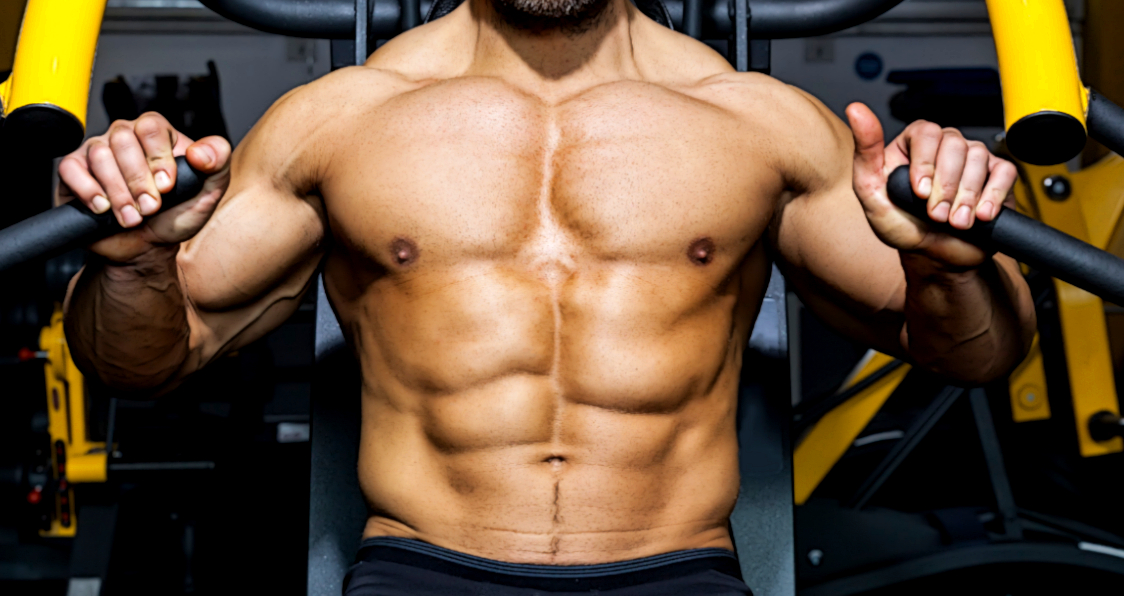
Can You Handle The Wrath Of Frank McGrath’s Workout?
The Wrath of McGrath.
Bodybuilding is all about sacrifice. If you intend on being a pro bodybuilder it means time away from your family and friends, having a strict diet and training method. Essentially what you give to the sport will be what you get out of it. You have to want it bad enough to put up with the suffering that you must endure to see meaningful progress. Everyone has to endure trials and tribulations, but no matter what issues you are faced with it must not push you off the track to greatness. Each workout must be daring and push you not just to the limit but past it.
Frank “The Wrath” McGrath is a true inspiration for any athlete to admire. He’s a man who trains hard in the gym and gives his all in his endeavor to becoming a renowned pro bodybuilder. The Canadian IFBB Pro has faced his fair share of adversity during his career. Not only has he suffered numerous training injuries, including a torn triceps muscle, but McGrath was also involved in a car accident that left him severely injured.
Few men could come back from such a situation and still have the drive to push themselves hard in the gym. But The Wrath only used his dire situation as motivation to get back into pro shape. He didn’t let his injuries hold him back, instead choosing to push himself past his limits and attain an even more impressive form than ever before.
Looking at his training regimen it’s no secret as to why he was able to fight through the pain and anguish he endured to get himself back into exceptional shape. His tough training likely gave him the mental strength to come back from injury and make a return to form. Take a look at the proud Canadian’s training program that made him into the massive, vascular beast that he is today.
Day 1: Chest
Incline Barbell Press
4 sets x 12-6 reps
Flat Dumbbell Press
4 sets x 12-8 reps
Incline Dumbbell Flyes
3 sets x 12-8 reps
Dumbbell Pullovers
3 sets x 12-10 reps
Cable Crossovers
4 sets x 15-12 reps
Day 2: Back
Wide Grips Chins
4 sets x 10 reps
Barbell Rows
4 sets x 12-6 reps
T-Bar Rows
4 sets x 12-8 reps
Underhand Grip Pulldowns
3 sets x 12-10 reps
Day 3: Off
Day 4: Legs
Leg Extensions
4 sets x 20 reps (warm-up)
Leg Press
4 sets x 20-12 reps
Hack Squats
4 sets x 15-10 reps
Lunges
3 sets x 15-12 reps
Stiff-legged Deadlifts
4 sets x 12-8 reps
Lying Leg Curls
4 sets x 15-10 reps
Day 5: Delts
Barbell Military Press
4 sets x 12-6 reps
Seated Side DB Lateral Raises
4 sets x 12-8 reps
Bent Rear Delt Lateral Raises
4 sets x 12-10 reps
Hammer Strength Machine Press
3 sets x 12-10 reps
DB Shrugs
4 sets x 12-8 reps
Day 6: Arms
Barbell Curls
4 sets x 12-6 reps
Alternating Dumbbell Curls
4 sets x 12-8 reps
Preacher Machine Curls
4 sets x 15-10 reps
Close Grip Bench Press
4 sets x 15-8 reps
Skullcrushers
4 sets x 12-8 reps
Pushdowns
4 sets x 15-10 reps
Day 7: Off
Final Thoughts
At the end of the day, one of the most important things a person can do to prevent plateaus is mix up the variations in their workout. While consistency is important, repeating the same exact workout for months or even years at a time will start to cause frustration when you start seeing less and less results.
This breakdown of Frank McGrath’s workout might be just the shot in the arm you need to start mixing things up, pushing you past your perceived limits, and into a new level of growth and strength.
Does your training program look anything like Frank McGrath’s? Let us know in the comments below and be sure to follow Generation Iron on Facebook and Twitter.
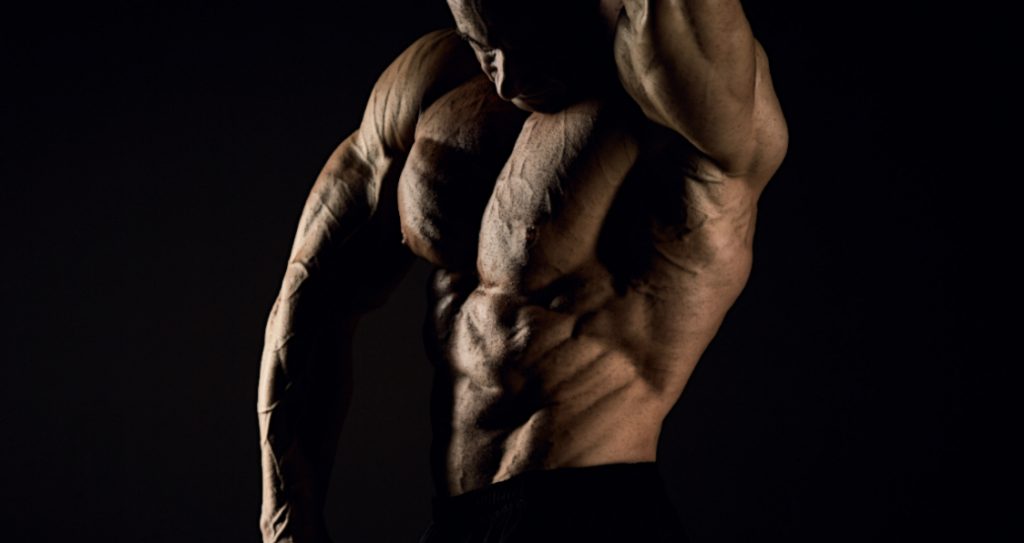
4 Reasons Why The Clean-Reverse Lunge Will Perfect Your Legs
Beyond the squat.
We’ve touched a lot on how leg day is perhaps the most dreaded day in a bodybuilder’s workout schedule. It’s rough, it’s tough, and it can be draining if you’re training correctly. It’s a day that’s meant to separate the men from the boys and can be a truly taxing day on the body. But a bodybuilder doesn’t look at the hard days as something to avoid. Instead, a bodybuilder seeks out the tougher times and uses them as the key to making further improvements to their bodies.
The rule of thumb for leg day is that squats are the key exercise to getting your legs as powerful as possible. It’s a notion that rings true, that’s why everyone is adamant about including the king of exercises into a leg program. But if you want to make the kind of improvements you need to build superior size and definition in your legs, then squats can’t and won’t be the only exercise that’s integrated into your routine.
The Clean-Reverse Lunge is great exercise that can be extremely beneficial to giving you some great leg development. Besides adding variety to your exercise, this exercise can offer the user a number of great improvements to their physique, technique, and form.
So why should you start doing the clean-reverse lunge? Well here are four reasons that could convince you to add this exercise to your workout.
Fixes Imbalances
As a bodybuilder, symmetry is a very important aspect of creating an aesthetic physique. When performing certain exercises like the squat or barbell bench press, compound movements, imbalances can occur if one side is doing more work than the other. The clean-reverse lunge is great because it can fix those imbalances not only in the legs, but the core and upper back as well.
Strengthens Upper Back
Speaking of which, this exercise is also great for strengthening the upper quadrants of the back. By holding the bar in the clean or front squat position you engage your upper body tremendously with this movement. When performing the actual lunge, the time in which your body is under tension ultimately will require you to have good posture which improves overall upper body strength – including your lats and traps. The improved posture will also translate to improving your deadlifts as well.
Strengthens Core
The exercise can also be great for improving your core strength as well. While holding the barbell in the clean or front squat position, your abs will be getting a phenomenal workout. For the same reasons that make the squat such an awesome exercise, the clean-reverse lunge is an exercise that targets multiple muscle groups, not only improving your legs, but the entire body as well.
Knee Friendly
For many people who resent leg day the biggest complaint is that the workouts that they’re performing are killing their knee joints. It’s hard to get through a rough exercise if your knees are racked with pain. The movement of the clean-reverse lunge allows for the shins to remain vertical which takes a great deal of stress off of the knees. It’s an exercise that promotes quad development, but not at the costs of destroying your knees.
Are you a fan of the clean-reverse lunge? Let us know in the comments below and be sure to follow Generation Iron on Facebook and Twitter.
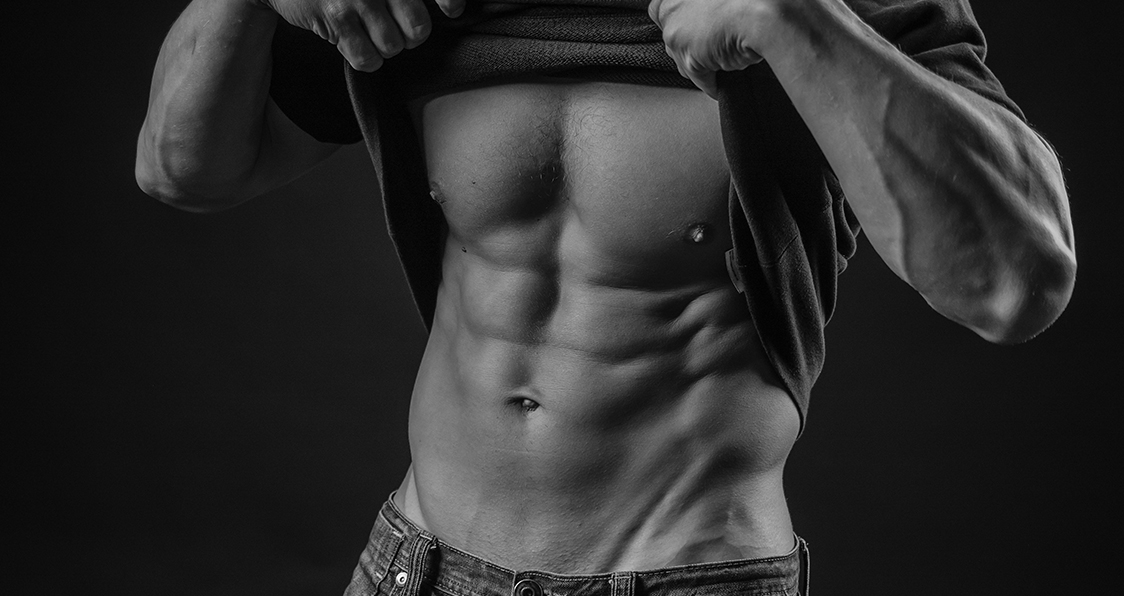
Build Up Your Abs With This Core Thrashing Circuit
How To Build Your Abs Using A Core Circuit.
If your training goals consist of building solid slabs of muscle while chiseling away at unwanted body fat in the process, the use of high intensity bouts of conditioning needs to be an absolute cornerstone in your aesthetics programming. This is especially true for tightening your core.
While there are too many types of conditioning methods circulating the industry to keep track of, one attribute that many lack is intensity. Want to get the most out of your conditioning? Try getting after it when your body and mind are close to the point of absolute exhaustion at the tail end of a training session. This is where real gains are made, and the real athletes are separated from the soft pretenders.
Not only will maximally exerted conditioning sessions skyrocket your metabolic rate, they will help you achieve a higher level of testicular fortitude in the process, building a foundation of pride and accomplishment that follows you through whatever path you choose to follow.
LOADED CARRIES
There is no doubt that the traditional farmers carry is a great way to teach and develop proper shoulder and trunk alignment under some heavy ass loads that require concentrated effort to move, let alone execute with pristine form. While the staple carry will always have its place in conditioning programming, slight variations of the loaded carry can help emphasize a movement pattern of muscle group being trained through the addition of direct and muscle specific conditioning.
If you want to be absolutely sure to thrash your shoulders, core and hips simultaneously while squeezing every available ounce energy out of your body, putting the final nail in your training day coffin, the cross body carry (CBC) is a powerful variation of the loaded carry.
Performing the cross body carry paired with the static push up hold has the ability to generate a huge amount of metabolic stress through the shoulders and core, while increasing your heart rate and exertion to near maximal levels.
THE SUPERSET
Executing the cross body carry followed by a violently tensioned static push up hold at the tail end of your upper body emphasized training days will leave your shoulders trembling, your core on fire, and your eyes searching for the nearest garbage can in case your lunch is coming out for an encore appearance.
To see what you’re really made of, minimize rest periods while using near-maximal loads for the given time intervals. A good starting weight will be holding 75% of your body weight in the bottom hand and 50% in the hand positioned overhead. If this six-minute addition to your upper body-training day doesn’t leave you on the ground in sheer exhaustion by the last round, buck up and go heavier next session..
KETTLEBELL CROSS BODY CARRY
COACHING POINTS- CBC
Choose loads that are near maximal while still keeping your spine and shoulders in a neutral position at all times..
Use a slightly heavier load in the bottom hand- Challenge yourself! Start off with a load of 75% of your bodyweight in your bottom hand and 50% in your hand positioned overhead..
Assume a slow and steady walking speed that can be maintained throughout the set..
Shorten your stride length. Think one foot directly in front of the other keeping your feet well under your center of gravity..
Alternate the left and right hand positions for each set you complete. Do not switch your hand positions mid set while you are on the clock!
PUSH UP ISO-HOLD
COACHING POINTS- PUSH UP HOLD
Start in quadruped position and activate your core by maximally squeezing your abdominal wall and upper extremities..
Prep your shoulders by stabilizing your shoulder blades down and back, externally rotating the shoulder joint..
One leg at a time, step back and place feet at shoulder width apart while squeezing your body as hard as you possibly can to maximize full body tension..
Hold maximal tension in your glutes, core and shoulders simultaneously..
Maintain maximal tension for the duration of the hold, and remember, if you aren’t shaking you aren’t really generating that much tension..
PROGRAMMING
This conditioning superset is ideal for a tag on for any upper body emphasized training day. If you feel like you have a little fuel left to burn before shooting down that $8 gluten free smoothie of yours, grab some KB’s and get after it. The first time through, use the programming parameters below. From there, it’s in your hands! Get as crazy as your body, or mind, will allow!
1A KB CROSS BODY CARRY 6 sets / 20 seconds / 10 seconds rest
1B PUSH-UP ISO-HOLD 6 sets / 20 seconds / 10 seconds rest
*Note that for the CBC, each set will alternate arms in the up and down position. Ex. set 1 right arm up, left arm down to the side, set 2 left arm up, right arm down to the side
Dr. John Rusin is not your run-of-the-mill physical therapist. His innovative vision and knowledge brings together high-performance strength and hypertrophy programming with cutting-edge, pain-free training methodology. With more than a decade of elite level training experience and advanced degrees in both exercise science and physical therapy, Dr. Rusin develops performance, regeneration, and aesthetics programs for some of the world’s best power athletes, NFL and MLB athletes, Gold-Medal Olympians, competitive powerlifters and bodybuilders.
- 1
- 2
